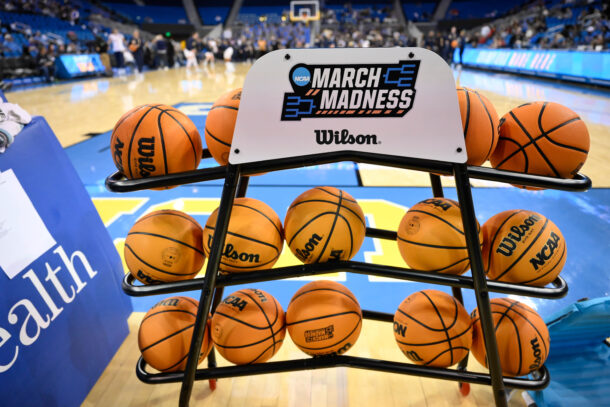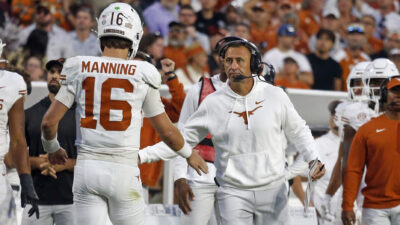
March Madness will stay at 68: For once, the NCAA doesn’t ruin a nearly perfect thing
After months of discussion, the NCAA announced on Monday that the field for the NCAA Tournament, for both men and women, will remain at 68 teams. There will be no expansion of the event in 2026, which leads me to write a sentence it may help to read aloud, given how rarely it is put out into the universe.
The NCAA did the right thing.
Regrettably, but also predictably, the NCAA men’s and women’s basketball committees did manage to at least partially get in the way of a rare good NCAA news cycle, announcing that discussions about potential expansion for 2027 will continue.
“Expanding the tournament fields is no longer being contemplated for the 2026 men’s and women’s basketball championships,” Dan Gavitt, the NCAA’s senior vice president of basketball, said in a statement. “However, the committees will continue conversations on whether to recommend expanding to 72 or 76 teams in advance of the 2027 championships.”
Of course there was a catch. This is the NCAA, after all. We can’t have nice things without reservations.
Let’s be clear. Declining to expand is unequivocally a good thing.
The only folks speaking out in favor of expansion are power league commissioners, and even they don’t like to do it loudly.
That makes sense, considering how loudly public opinion has galvanized against expansion.
A vote on expansion was tabled in July, largely due to widespread backlash from fans and effective platform-wielding by college basketball media royalty. But the quelling of expansion momentum doesn’t just speak to the power of fans and media scribes who loyally cover the sport. It speaks to the near perfection of March Madness, the one thing that in all kinds of weather, through immense changes to the college sporting landscape, college sports still gets mostly right.
There are myriad data-driven reasons to oppose expansion. A sampling of those arguments would rightly note:
- Expansion will largely benefit mediocre teams from power conferences. If you were (rightly) incensed that a 22-13 North Carolina team with 1 Quadrant 1 win was given a bid a season ago, prepare for that to happen repeatedly in an expanded field, without so much as a whimper of a debate about the justice of it all.
- Expansion isn’t about access. There have been 91 Division I teams added since 1984-85, when the field expanded to 64. Those teams have earned 168 bids. Guess how many of those bids have been at-large invites? One. UCF, in 2019. The Knights promptly used that bid as another feather in their decade-long push to join a power conference, and they now play in the basketball-rich Big 12.
- Only 2 programs added to Division I in the last 40 years have advanced to the second weekend: Florida Gulf Coast (Sweet 16, 2013) and Florida Atlantic (2023). Cinderellas still exist, from George Mason in 2006 to Saint Peter’s in 2022, but it’s established programs that overwhelmingly play deep into March and we do not need more “access” to prove that point.
- High-major mediocrity is amply rewarded in the current system. In the past 10 NCAA Tournaments, 304 of the 362 at-large bids went to teams from the 6 (now 5) Power Conferences (ACC, Big East, B1G, Big 12, Pac-12, SEC). That is 83% of at-large bids, and if you throw in Gonzaga and Memphis, 2 “major” programs playing in non-power leagues, the number of at-large bids swells to 308 of 362, moving the percentage to 85% of at-large bids. Expansion means more middling teams from power leagues get in, like Texas, who flew an SEC banner a season ago and was rewarded for winning just a third of its league games with an NCAA Tournament bid. The Horns were promptly defeated handily by Xavier in Dayton.
If anything, the data tells us that the NCAA selection committee should invite fewer power conference teams and reward more mid-major programs. Stop inviting power league programs like North Carolina, who had chance after chance from November until March to prove it belonged in the field of 68, and invite more teams like UC-Irvine, who won 28 games before losing a hard-fought Big West Tournament final to UC-San Diego last March. The Anteaters were dispatched to the NIT, where they promptly reached the championship game, more than proving their mettle in an NIT field that included multiple power conference teams. If you want to improve “access,” do it within the context of the current field of 68 and invite great teams from lesser leagues, not frustrating, underachieving ones from the already powerful ones.
By the way, this isn’t an argument against power conference basketball. On the contrary, it’s hard to find a story in the sport as compelling as the rise of the SEC from parochial college basketball backwater to summit of the sport, with 4 Elite Eight participants, 2 Final Four programs, and the national champion. I’m well-qualified to suggest that, given how I’ve covered the league in the lean years and the recent bountiful ones. And I’ve praised Greg Sankey and his outstanding basketball associate commissioner, Garth Glissman, for the role they’ve played in making the SEC a behemoth. But SEC basketball doesn’t need expansion to have staying power. Its run of greatness is only beginning.
Instead, the argument against expansion is more straightforward, and it’s one that resonates when I talk about this issue with folks who aren’t necessarily hoopheads like me.
March Madness, put plainly, is almost perfect as it is, and what few problems it does have aren’t related to the Field of 68.
How else do you explain the way a sport some (unfortunate and unlucky) fans don’t pay attention to until after the Super Bowl rising from niche status to an event that captivates an entire country for a month? The NFL owns the language “Any Given Sunday,” filling bars and mediocre restaurants nationwide 20-plus Sundays a year. For a month, the phrase “This is March” stirs similar sentiments. College basketball is synonymous with an entire month of the calendar.
The NCAA Tournament sparks national unity and joy at a time when as a general rule, unity is lacking and joy can feel scarce.
The symmetry of a 68 (and in truth, a 64) team bracket contributes to that unity and joy.
It’s easy for the office administrative assistant to win the office basketball pool when all she has to do is print out a single piece of paper and write her picks from a perfectly-assembled 4 quadrant grid. Ask her to print 2 pages and a grid that looks more like a maze, though, and see whether she enters at all. Sure, the diehard gamblers will enjoy expansion to 72 or 76. But at least part of the joy of the field of 68 remains the annual phone calls sons like me get from our Mom, who naturally has decided “to fill out a bracket, just for fun, I know I won’t win” every March. (My Mama has won twice in the last 10 years alone, and while anecdotal, has expressed grim anxiety over expansion.)
For the most part, the NCAA Tournament is already perfect.
The opening weekend captivates us, and folks across America take the day off on Thursday or cut out early on Friday to soak in wall-to-wall action in the first round. Expand to 72 or 76, and those games likely start on a Tuesday or a Wednesday. Hoopheads will tune in and loyal fans will travel, but the national attention commanded by the opening weekend will waver and wane. If you don’t believe that, look at the ratings for the First Four, which range from average to awful, no matter how great a job the city of Dayton does hosting the teams and fans that actually make the trip.
The opening weekend also gives us plenty of Cinderellas and memorable stories, and since the data says small schools won’t benefit from expansion, we know the argument that expansion will only add to the tournament’s myth and magic is farcical at best.
There will always be the occasional Florida Atlantic or rare Saint Peter’s type story to cling to from year-to-year, but given the committee prefers power leagues in the status quo, those stories are unrelated to expansion. In fact, because expansion would require a prospective Cinderella to win even more games, the reality is expansion likely renders Cinderella stories even more of an aberration, like heat lightning. More likely? We see a middling team from the Big 12 win a rock fight over a mediocre squad from the Big East. Some hoops fans, the kind who listen to college basketball podcasts in July and plan Thanksgiving around Feast Week events are wack-a-doodle enough to enjoy that. I know too many of them, being one myself. Using those people as a reason to justify expansion is like believing God favors one team or another on any given Sweet 16 Thursday when both fan bases have folks praying furiously. It’s more likely that God expects you to make free throws and box out.
The truth is the NCAA has a near perfect thing in an era of college sports where near perfect things are dying.
Will this bother some fans and writers who chant “SEC, SEC, SEC” or believe it’s unfair to leave a Big 12 team with a lottery pick and a 3-12 record in Quad 1 games out of the Big Dance? Probably. Of course, the good news is if you want your team in the NCAA Tournament, they can win more games from November until early March. You have 31 opportunities to compete and occasionally, though not often, the selection committee cares about the conference tournament, too. The answer is almost always “win more.” We don’t need inclusion and participation trophies. We need good basketball teams. A field of 68, whittled to a perfect 64 by Thursday at noon.
March Madness as it should be. A cultural institution worth preserving.
,
Neil Blackmon covers SEC football and basketball for SaturdayDownSouth.com. An attorney, he is also a member of the Football and Basketball Writers Associations of America. He also coaches basketball.






